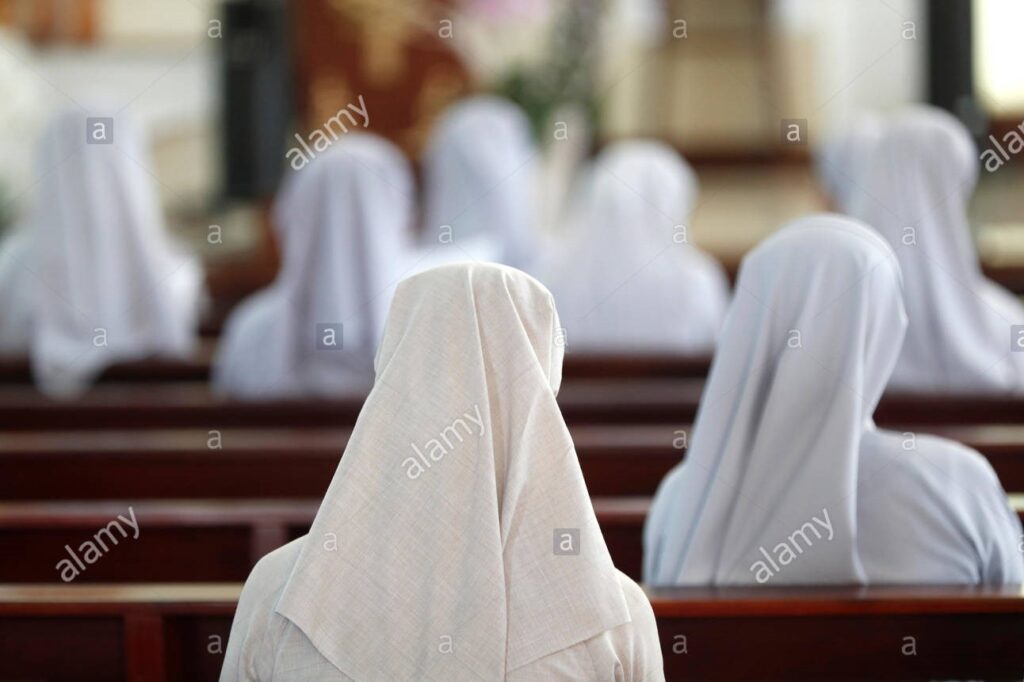
Franciscan Sisters
As a response to the request made by the Most Rev. Dr. Christopher Bonjean OMI, Archbishop of Colombo, six Franciscan Sisters set sail to come to Sri Lanka in order to start a new English school for girls in Moratuwa. Archbishop Bonjean himself together with another 2 priests, Coudert and Griaux accompanied them from France.
English School
On March 6, 1886, they landed in Sri Lanka and were welcome by a group of Catholics. Then they were escorted to St. Lucia’s Cathedral and stayed in St. James’ Church, Mutwal before they left for Moratuwa. As they went to Moratuwa, they were welcomed by the Parish Priest and the parishioners who escorted them to the new convent which was dedicated to St. Anne, even though it came to be known as the school of Our Lady of Victories. One of the first priorities of the sisters as they came and occupied the place was to learn Sinhalese and to familiarize them with Sinhalese customs.
On the 25th March 1886, they started the new school with the blessings of the Lord. They had to face their own problems as they were not very fluent in English, but managed at last to develop the school to greater heights. They had new sisters got down from overseas who could handle English more fluently and they also had masters coming down from Colombo to instruct the teachers and the students. Even though this came to be an additional financial burden, they did it with enthusiasm as they were interested more in the school. The school developed rapidly and had numbers increasing within a very short period of time.
Sinhala School
With the rapid development of the area with new demands for education, the sisters also felt the need for another Sinhala medium school in order to cater to the need of the poor families. In the year 1891, this became a reality with the construction of a small building for the school. The government examinations were also held in the same year after getting the registration from the government. New buildings were constructed for the school as the original one ran short of space. This school was also constructed in the same premises where the English school had been together with the convent of the sisters.
Industrial School
In the year 1898, the sisters started an industrial school in order to bring out the talents of the children. They also established different sodalities and societies which supported the growth of the personality of these children within a Christian atmosphere. Most Rev. Dr. Andrew Melizan OMI, Archbishop of Colombo was in full favour of these activities.
Boarding House
Sisters were also interested in a boarding house which could retain the girls to give them a special training. The parents were interested in this concept as the u grew up in the custody of the sisters, learning for themselves good mannerisms, simplicity, maturity and many other qualities. They also learnt from the sisters skills such as hand work and prepared themselves for a healthy family life. This boarding house was also situated in the same premises where the convent and the schools were.
Workroom
This is a novel concept that was put to practice by the sisters in order to give vocational experience to the girls. The concept paved the way to train the girls for lace-related creative activities through which they were trained to earn their own livelihood. At the beginning, they had their difficulties about the commitment of the girls, but as time went on, they achieved success.
Other Vernacular Schools
The sisters were put in charge of the village school in Kautukurunda, which is situated in the outskirts of Moratuwa. They were not able to see success in this because of the attitude of the parents towards giving their children a good education. They were coming from poverty-stricken families, mostly without having anything to eat. The sisters were willing to look after their needs other than education and also to do the minor repairs to the school buildings.
They were also invited to look after another school which is St. Michael’s school in Katukurunda. Due to the limited number of the sisters, they put lay people in charge of the school while the novices and the postulants engaged themselves in the activities. Sisters were visiting the school as often as possible.
Orphanage
In 1880, they also stated an orphanage in order to look after the orphan children. As they ran short of space, they bought new land and built new constructions to house the children.
Crèche
Little infants were also brought to the sisters looking for their assistance to look after them. As the sisters did not have much room in the convent, they handed them over to the nurses in the neighbourhood. They were looked after by them under the supervision of the sisters.
The sisters continue to offer their services in the field of education. About 20 of them serve in both private and government schools in order to bring Christ to the lives of the children. Their silent but deep sense of service can be appreciated as they give themselves totally for the sake of the Lord.
